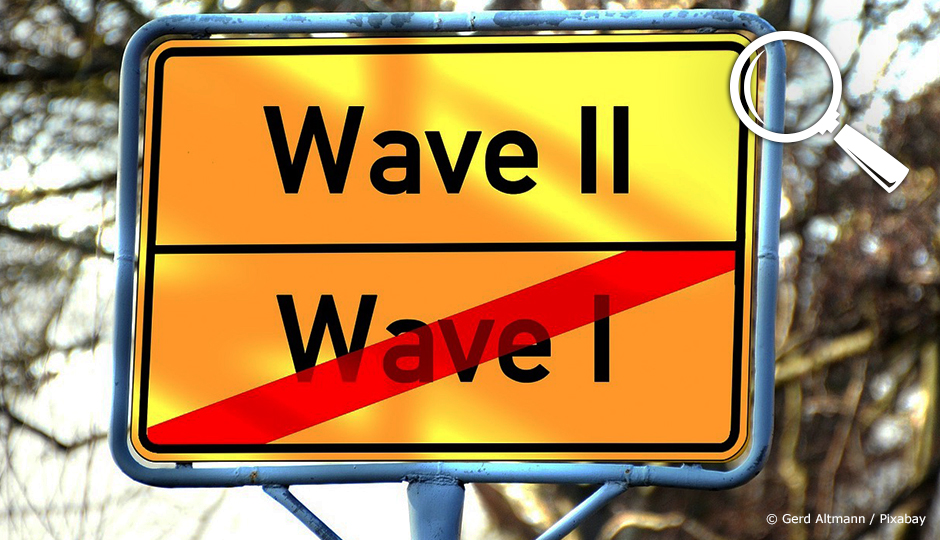Auteur : Agence Science Presse - Catherine Couturier
The curve of coronavirus cases in Québec is falling gradually. But experts here and in the rest of the world continue to fear a second wave. The Rumour Detector asked what form this wave could take. Could there be multiple waves?
What is a second wave?
A second wave would occur when the number of new coronavirus cases starts rising again, after falling for awhile, and even after dropping to zero. A second wave can also occur after a long period when the number of cases had stabilized – a plateau.
In the past, major flu epidemics weren’t limited to a single wave. The second wave of the 1918 pandemic was deadlier than the first. The Asian flu (H2N2) of 1957 and the Hong Kong flu (H3N2) of 1968 also had more than one wave.
There can be many reasons for a second wave: The virus starts circulating again as the confinement measures are lifted. Or travellers bring back the virus from abroad. Or the return of cold weather makes it easier for the virus to spread, when people are indoors more often. Or a mutation makes the virus more contagious.
Could there be more than two waves? Yes
Nothing indicates that the second wave, predicted by many models for weeks — has to be similar to the first. It also doesn’t have to be the only one! Some experts forecast scenarios that feature a succession of waves of unequal sizes. In a report published on April 30, epidemiologist Michael Osterholm of the University of Minnesota and three of his colleagues describe three scenarios.
The first predicts several waves that will decrease gradually in strength up to the end of 2021. These subsequent peaks could vary considerably between countries and even between regions. It all depends on the measures taken by each government.
The second scenario predicts a second wave greater than the first, the one we have just gone through. It would occur in fall or winter, followed by one or more smaller waves. This model would be similar to the 1918 flu pandemic. It could have the biggest effect in forcing States to reinstate confinement measures.
The third scenario shows a single intense peak in the spring — what we just saw — followed by a succession of small highs and lows. No obvious peaks would appear. This scenario wouldn’t require such strict confinement measures. But the report’s authors say an indeterminate number of new cases, hospitalizations and deaths could continue over the next 18 to 24 months. A report by the Imperial College London, published in March, forecasts a similar scenario. It also imagines such waves extending to the end of 2021, and even the beginning of 2022.








